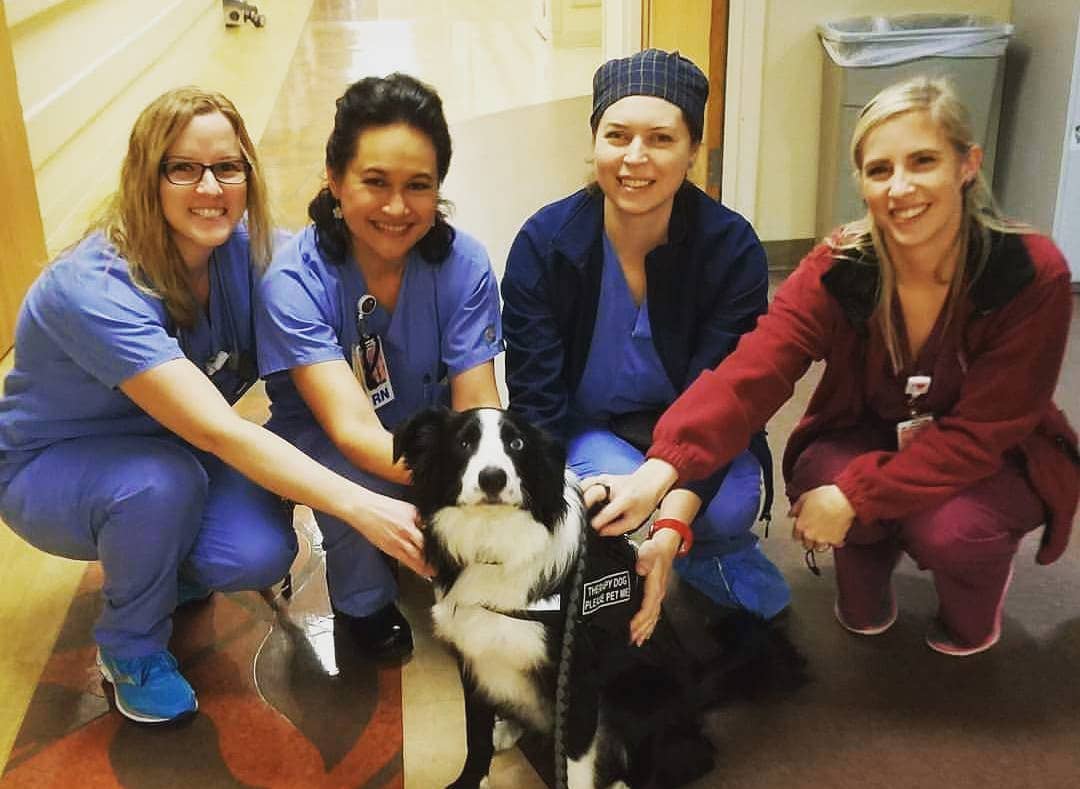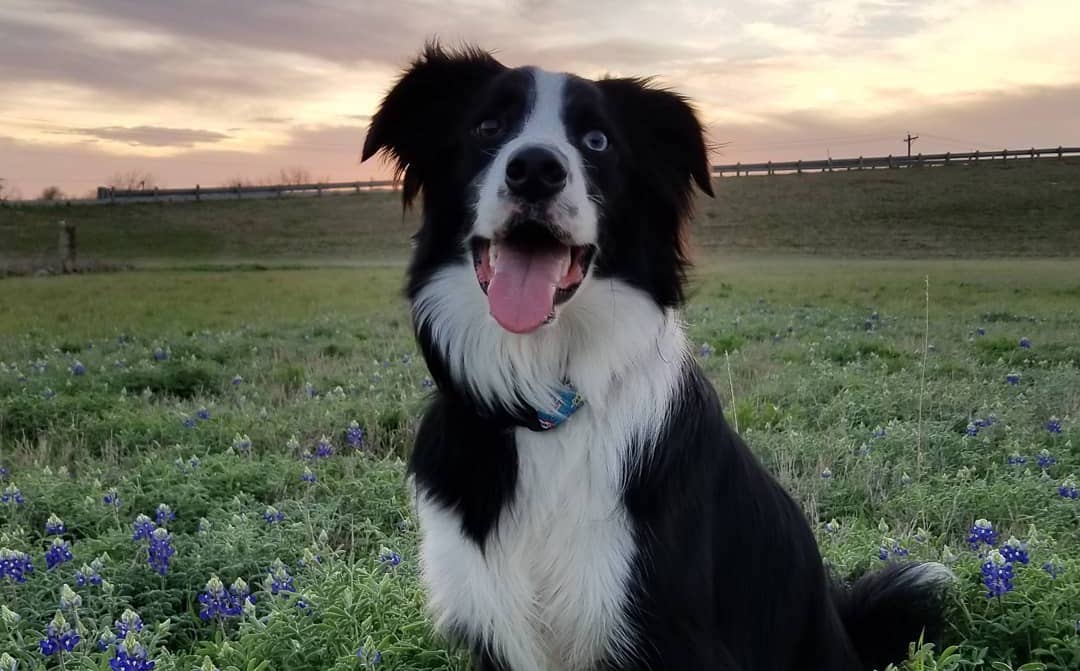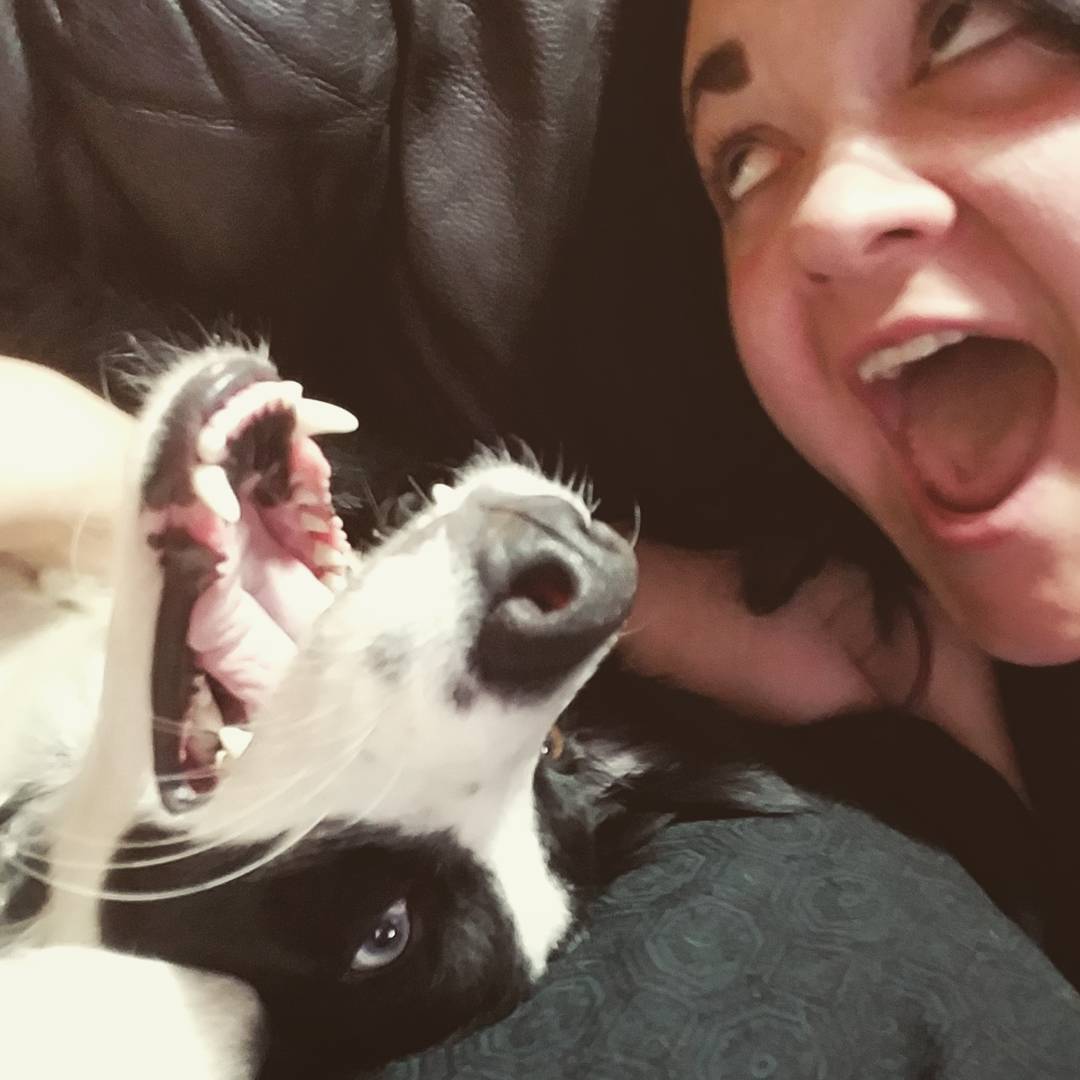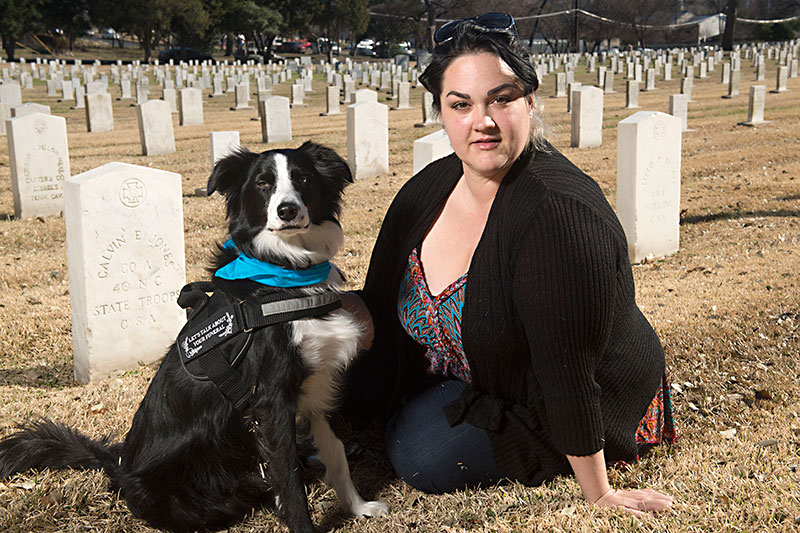Want a Therapy Dog for Your Funeral Home? Learn How to Start the Process
After our touching story covering Kermit the therapy dog going to meet Florida shooting survivors we began to wonder about exactly what it takes for a funeral home to add a friendly therapy dog to their team. We contacted one of the most famous death care therapy dogs online to learn more and his owner Melissa Unfred (aka Modern Mortician on Instagram) shared her dog Kermit’s story with Connecting Directors. Below you will learn how Unfred came to unite with Kermit and the path of getting him to a fully certified and proud Therapy Dog.
Feature Image Credit: John Anderson for The Austin Chronicle
——————————————————————————————–
Melissa Unfred: The Modern Mortician – Once upon a time, while serving my apprenticeship in a dusty little West Texas town, I read an article online about a dog named Lulu working in a funeral home. I chuckled to myself, imagining taking my cat to funerals as therapy for others, and thinking if I ever had a dog, what a wonderful gift to the families to have a sidekick capable of serving not only me, but the community as well.
In the summer of 2016, at the urging of my primary care physician and therapist, I began to look for a dog companion to serve as my ESA (emotional support animal) to combat and soothe personal medical needs. My cat, Bella, had died from cancer a year prior, so my home and heart were open to a new companion.
I began by checking my local shelters in Austin, and a few days later found myself on Petfinder.com staring longingly at a black and white pup with mismatched eyes. I distinctly remember thinking to myself, “this is a dog you can talk to about death…”
At first, the shelter I rescued him from had dubbed him Slash. I pondered several days on what to name him, and then one afternoon it all came together: Widdle Kermit Ambrosius Von Prygodski. His name was a homage to so many things… however, I call him Kermit the Dog. The internet knows him as #DeathPositivePup and #GriefTherapyKermit.
That first night I brought him home, he accompanied me on 2 nursing home removals, staying tucked into the floorboard of the service van while I worked. The following morning, I logged into the Nextdoor neighborhood app and began to look for a dog trainer to prepare my new companion for life as an ESA.

Kermit began training on his basics; how to walk on a lead, come, heel. Commands like sit, stay, wait; everything a good dog should know to exhibit good manners. When he turned 11 months old, he took his first exam for the Canine Good Citizenship designation. I went on to Google to find an accredited testing site, and signed up to take this test at Petco. The exam proctor had a list of tasks Kermit would have to pass in order to earn his CGC. They varied from sit and stay, to walking past another dog without barking or interacting, and even placing Kermit in a stay position in the center of the store, while I was asked to leave his sight for a total of 3 minutes! When he passed this test, I was ready to introduce him to my doctors to get their approval, and letters designating him as an ESA. After that meeting, we were presented with documents allowing Kermit to accompany me in many daily activities, including flying.
As Kermit interacted with more people, I wanted to research the next step past emotional support; Therapy Dog. I wanted him to be able to serve the public, not just me. In our area, we had several non-profit dog therapy groups that offered proper training to certify the dog as a legitimate therapy dog. I selected to train and test with The Dog Alliance. There are rules to before you can begin training as a therapy dog:
1. Pups must be at least one year old.
2. They must have never trained in Schutzhund.
3. There can be no history of aggression.
4. Any breed of pup may be qualified to become a therapy dog, however:
“The dogs must enjoy people- they must seek people out and enjoy being handled and hugged by them. We have this saying that we can teach excellent obedience skills- we can’t teach a dog to love to be hugged by complete strangers.”- Carolyn Honish, trainer, The Dog Alliance
Kermit was allowed to begin training at 1 year of age. Every Saturday, we would join a class of 14 other pups and handlers, and go over the prior weeks lesson, then cover the new lesson, following with a run thru. The rest of the week we were on our own. After 2 months into a 3 month course, Kermit was allowed to test early, and he passed! The test was very difficult, and I am glad we were so serious about our training. We were now Texas’ first certified therapy dog team in Funeral Care!

There are 4 levels of working dog:
1. Comfort or Companion Dog
A Comfort or Companion Dog is a household pet or work companion without formal certification or working dog training.
2. Emotional Support Animal (ESA)
An Emotional Support Animal (ESA) companion animal that a medical professional has determined provides benefit for an individual with a disability. This may include improving at least one characteristic of the disability. Emotional support animals, typically dogs, but sometimes cats or other animals, may be used by people with a range of physical, psychiatric, or intellectual disabilities. In order to be prescribed an emotional support animal the person seeking such an animal must have a verifiable disability. To be afforded protection under United States federal law, a person must meet the federal definition of disability and must have a note from a physician or other medical professional stating that the person has that disability and that the emotional support animal provides a benefit for the individual with the disability.
3. Therapy Dog
A Therapy Dog is a dog that is be trained to provide comfort and love to people in hospitals, retirement homes, nursing homes, schools, hospices, disaster areas. They also do NOT have public access rights with exception to the specific places they are visiting and working. Typically the dog would be granted rights by individual facilities only. Therapy dogs are usually not assistance or service dogs, but can be one or both with some handlers. Many organizations provide evaluation and registration for therapy dogs.
4. Service Dog
Service dog is a type of assistance dog specifically trained to help people who have disabilities. The dog must be trained to perform 3 medically related tasks and can not be handled by the general public. The training is very extensive, and Desirable character traits in service animals typically include good temperament or psychological make-up (including biddability and trainability) and good health (including physical structure and stamina). Some service dogs are bred and trained by service dog organizations, while others are bred by breeders, and trained by private trainers or even the individuals with disabilities who will someday become their partners. Labrador Retrievers, Golden Retrievers, Labrador Retriever/Golden Retriever crossbred dogs, and German Shepherd Dogs are among the most common dog breeds working as service dogs today in the United States. Although dogs of almost any breed or mix of breeds may be capable of becoming a service dog, very few dogs have the requisite health and temperament qualities. Such a dog may be called a “service dog” or an “assistance dog”, the terminology typically varying by country or region. The term “seeing eye dog” is frequently used as a generic label referring to any dog assisting individuals who are blind or have visual impairments.

Funeral homes that bring in a dog without formal training and certification should not use the term Therapy Dog. They should use the term Comfort Dog. It’s like calling an Apprentice a licensed Embalmer. Lots of difference in skill level and training.
I highly encourage funeral homes to partner with local Therapy Dog teams in their area to provide this service to not only the families they serve, but to their staff as well. If builds community connection and strengthens morale.
Since completing his certification, Kermit and I have travelled all over the United States and been featured in online and print publications. I think the service we provide is with our heart, and not with marketing in mind. Bringing a team member of this caliber on board is a LIFETIME commitment. My dog is not a billboard. But he sure makes an impression.
Follow The Modern Mortician and Kermit on Instagram here!





